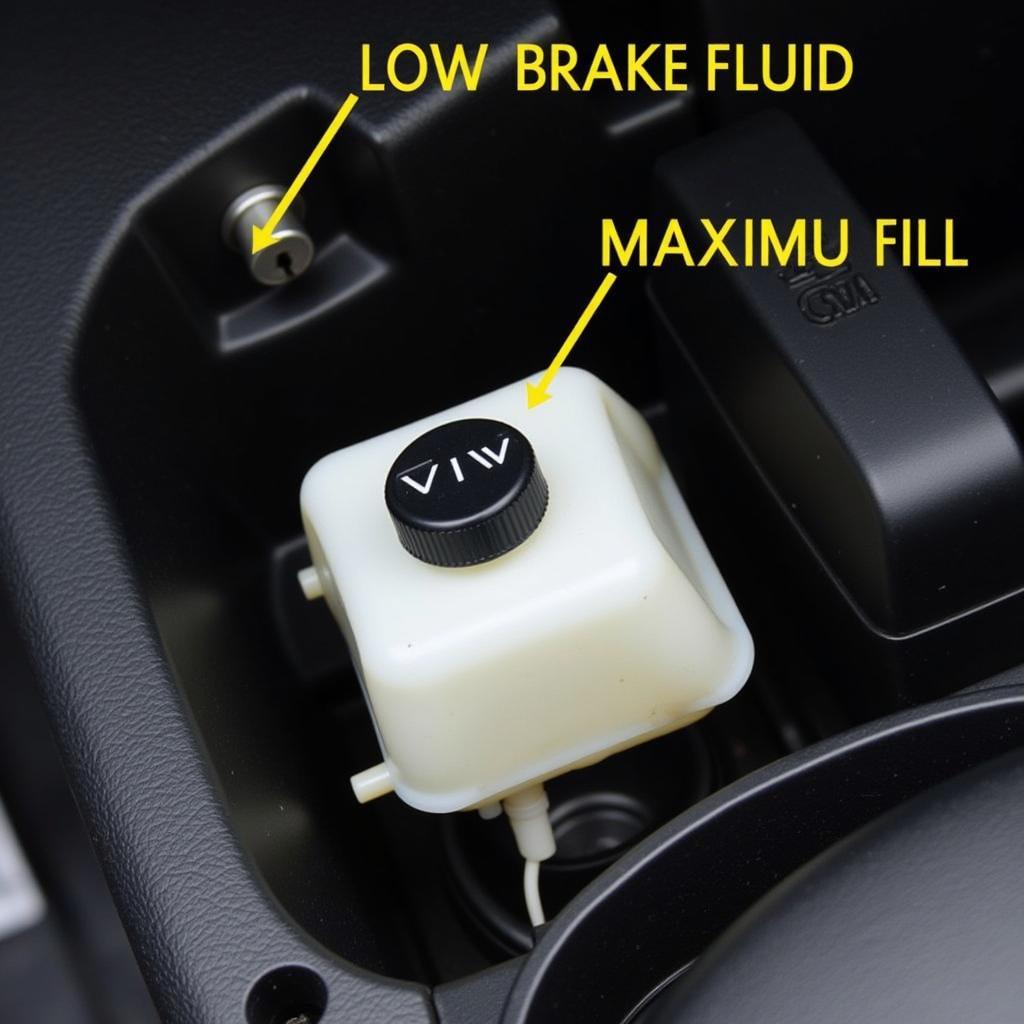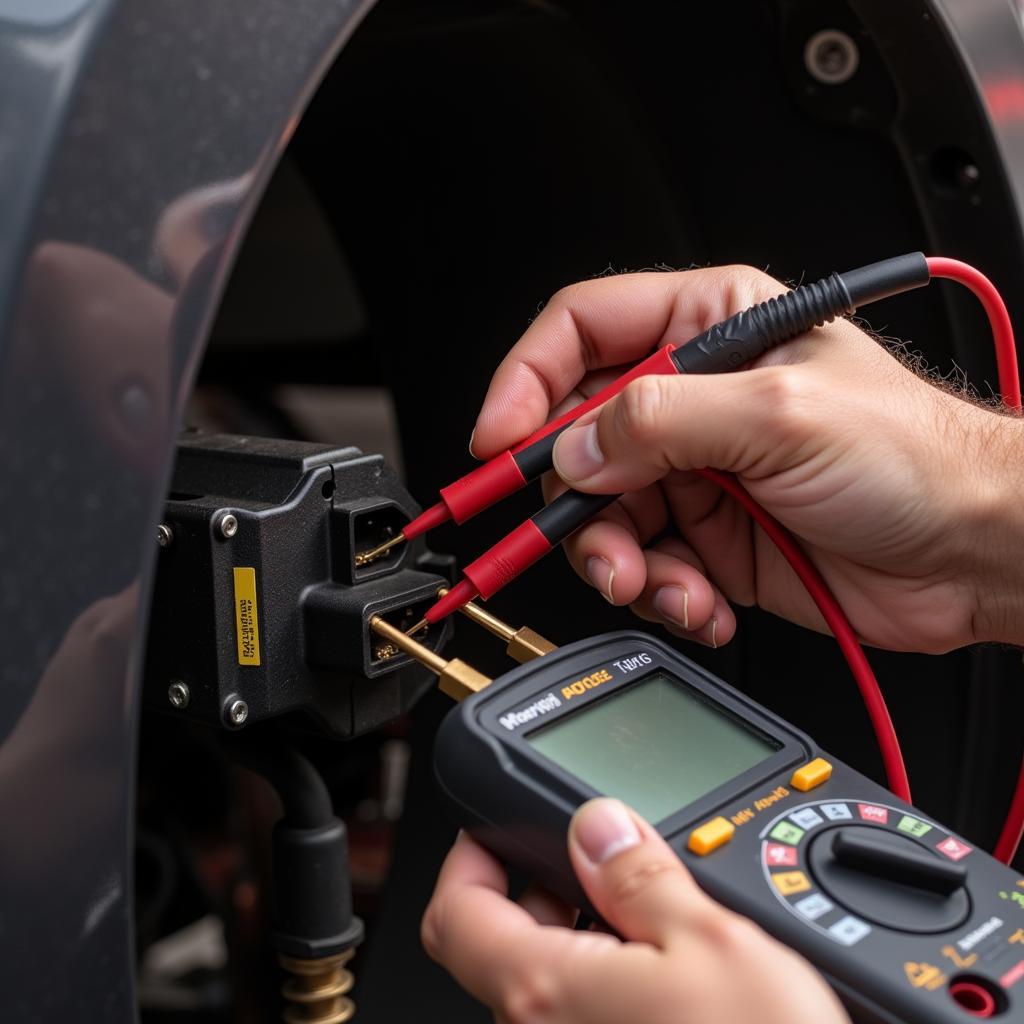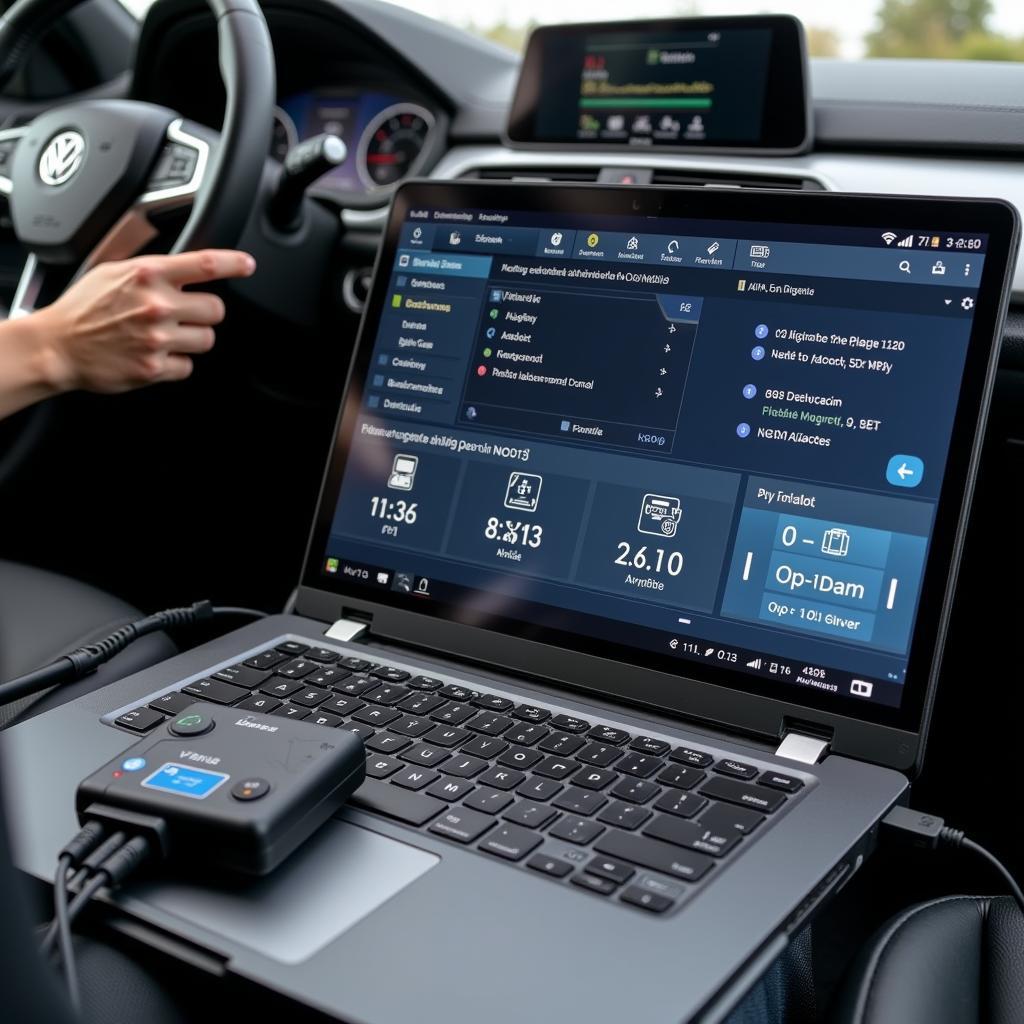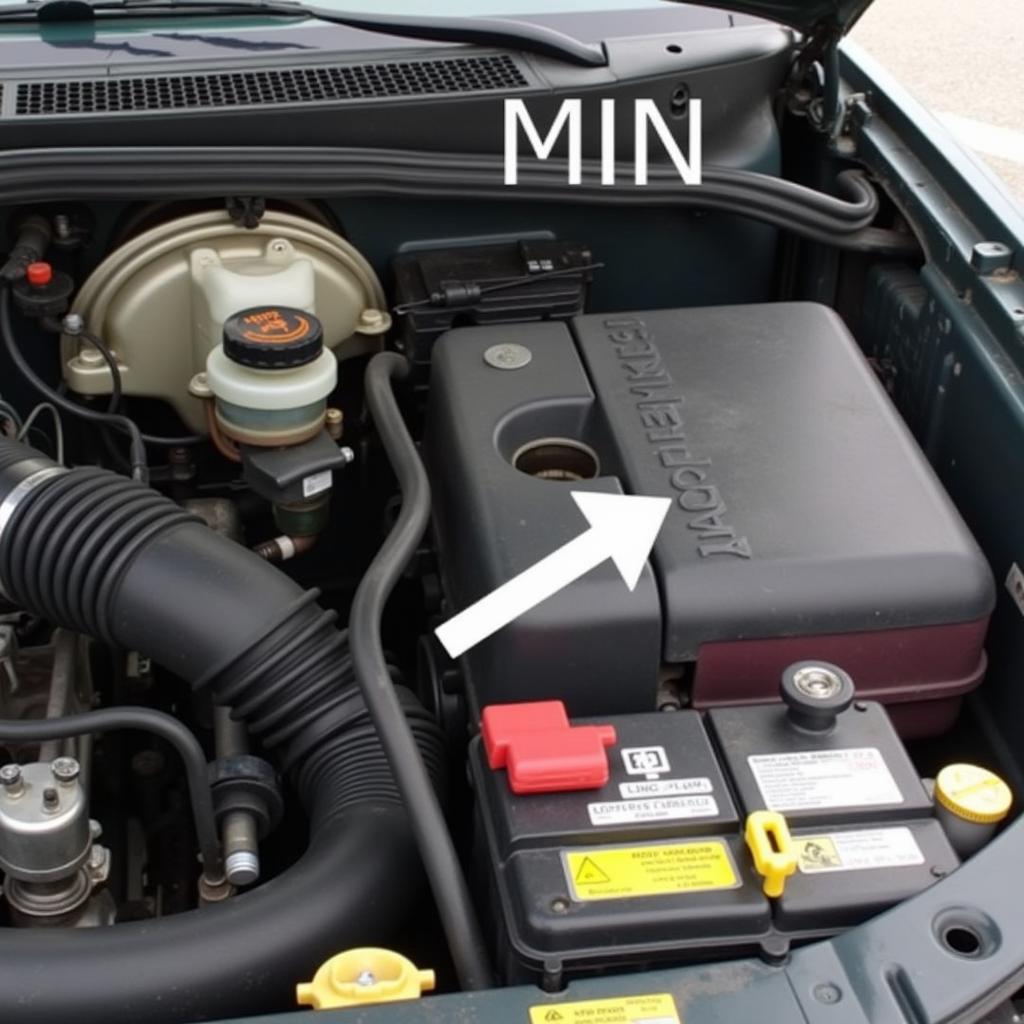Your brake warning light stubbornly glows even after replacing your wheel cylinders? This is a frustrating, but surprisingly common, issue. Don’t panic! This article will guide you through the potential causes and solutions, helping you diagnose and fix the problem yourself, or at least understand what to expect when taking your vehicle to a professional.
Understanding the Brake Warning Light
The brake warning light is a crucial safety feature, alerting you to potential problems within your braking system. It can illuminate for various reasons, from low brake fluid to more serious issues like a malfunctioning ABS system. When it stays on after replacing wheel cylinders, it suggests the problem wasn’t solely with the cylinders themselves, or a new issue has arisen.
Common Causes of a Persistent Brake Warning Light
Low Brake Fluid
The most common culprit is low brake fluid. Replacing wheel cylinders often requires bleeding the brakes, a process that can sometimes result in air entering the system or a slight loss of fluid. Check your brake fluid reservoir and top it off if necessary.
 Checking Brake Fluid Reservoir
Checking Brake Fluid Reservoir
Air in the Brake Lines
Even if the fluid level is correct, air trapped in the brake lines can trigger the warning light. This air compresses, reducing the hydraulic pressure needed for effective braking. Bleeding the brakes properly is essential to remove any trapped air.
Faulty Brake Light Switch
Believe it or not, a malfunctioning brake light switch can sometimes cause the brake warning light to illuminate. The switch is responsible for activating your brake lights when you press the pedal. If it’s faulty, it can send erroneous signals to the warning light.
 Testing a Brake Light Switch
Testing a Brake Light Switch
ABS Issues
While less common, problems with the Anti-lock Braking System (ABS) can also trigger the warning light. This is often accompanied by an ABS warning light. Diagnosing ABS issues typically requires specialized diagnostic tools.
Master Cylinder Problems
Sometimes, the master cylinder itself can be the source of the problem. If it’s leaking internally or not functioning correctly, it can cause a drop in brake pressure and illuminate the warning light.
Troubleshooting Steps
- Check the Brake Fluid: Ensure the brake fluid level is between the minimum and maximum marks on the reservoir.
- Bleed the Brakes: Properly bleeding the brakes is crucial to remove air from the lines. This process involves systematically opening and closing the bleed valves on each wheel cylinder while someone pumps the brake pedal.
- Inspect the Brake Light Switch: Test the brake light switch for proper operation. This often involves using a multimeter to check for continuity.
- Check for Leaks: Inspect all brake components, including the master cylinder, wheel cylinders, and brake lines, for any signs of leaks.
“Checking the brake fluid level is the first and easiest step in diagnosing a persistent brake warning light,” says John Miller, ASE Certified Master Technician. “Often, a simple top-up is all that’s needed.”
Remote Diagnostics and Programming
If you’ve exhausted the basic troubleshooting steps and the light persists, consider remote diagnostics and programming. This innovative approach allows a qualified technician to access your vehicle’s computer system remotely and pinpoint the issue. They can even reprogram certain modules to resolve software-related problems.
“Remote diagnostics can save you time and money by quickly identifying the root cause of the problem,” adds Sarah Chen, Automotive Software Engineer. “It’s a game-changer for modern vehicle repair.”
 Remote Diagnostics in Action
Remote Diagnostics in Action
Conclusion
A brake warning light that stays on after replacing wheel cylinders can be concerning, but with a systematic approach, you can often pinpoint and resolve the issue. By following the steps outlined in this article and considering remote diagnostics, you can get back on the road safely and confidently. Remember, if you’re unsure about any step, it’s always best to consult a qualified mechanic.
FAQ
- Can a bad wheel cylinder cause the brake warning light to come on? While a leaking wheel cylinder can indirectly cause the light to come on by lowering the brake fluid level, a new wheel cylinder shouldn’t cause the light to stay on unless there’s another issue.
- How much does it cost to bleed brakes? The cost to bleed brakes can vary depending on your location and the type of vehicle. However, it’s generally an affordable procedure.
- What is remote diagnostics? Remote diagnostics allows a technician to access your vehicle’s computer system remotely to diagnose and sometimes even fix problems.
- How do I check my brake fluid level? Locate the brake fluid reservoir under the hood of your car. The reservoir is usually a translucent plastic container with minimum and maximum fill lines.
- What does the ABS light mean? The ABS light indicates a problem with your Anti-lock Braking System.
- Can I drive with the brake warning light on? It’s not recommended to drive with the brake warning light on. It indicates a potential problem with your braking system that could compromise your safety.
- How often should I change my brake fluid? It’s generally recommended to change your brake fluid every two to three years.

